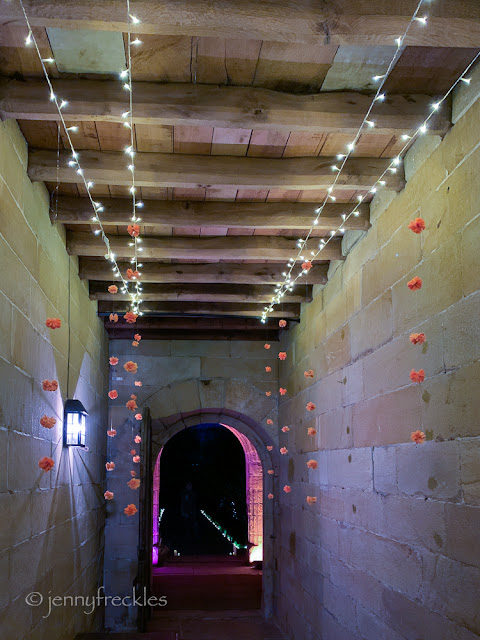I noticed that our local National Trust (NT) property, East Riddlesden Hall, was putting on a special display to celebrate Diwali, the Indian Festival of Lights. With religious significance for Hindus and several other faiths, it gets its name from the clay lights that people put around their homes for the festival, symbolising the inner light that protects from spiritual darkness, the triumph of good over evil. The Sanskrit word dīpāvali means 'a row or series of lights'.
Homes are decorated with patterns called rangoli, using coloured powder, sand or - as here - brightly coloured pompoms.
The Hindu festival is associated with Lakshmi, the goddess of wealth and prosperity. I believe the little statue here represents the Goddess, surrounded by Diya lamps, their clay holders made by local schoolchildren.
I must confess to knowing very little about the festival, though I know it is celebrated by our local Hindu communities with feasting and fireworks. It was good to see the NT getting into the spirit of things, in collaboration with various local Hindu community groups.
As the nights draw in and winter encroaches, I felt it was fitting to go and enjoy the lights - and to see East Riddlesden Hall with a different look. It's not normally open at night.








Lovely. Perfect time of year for it. I'm feeling the USA I live in could use some lights at the moment.
ReplyDeleteThat is wonderful that they put on such a display.
ReplyDelete